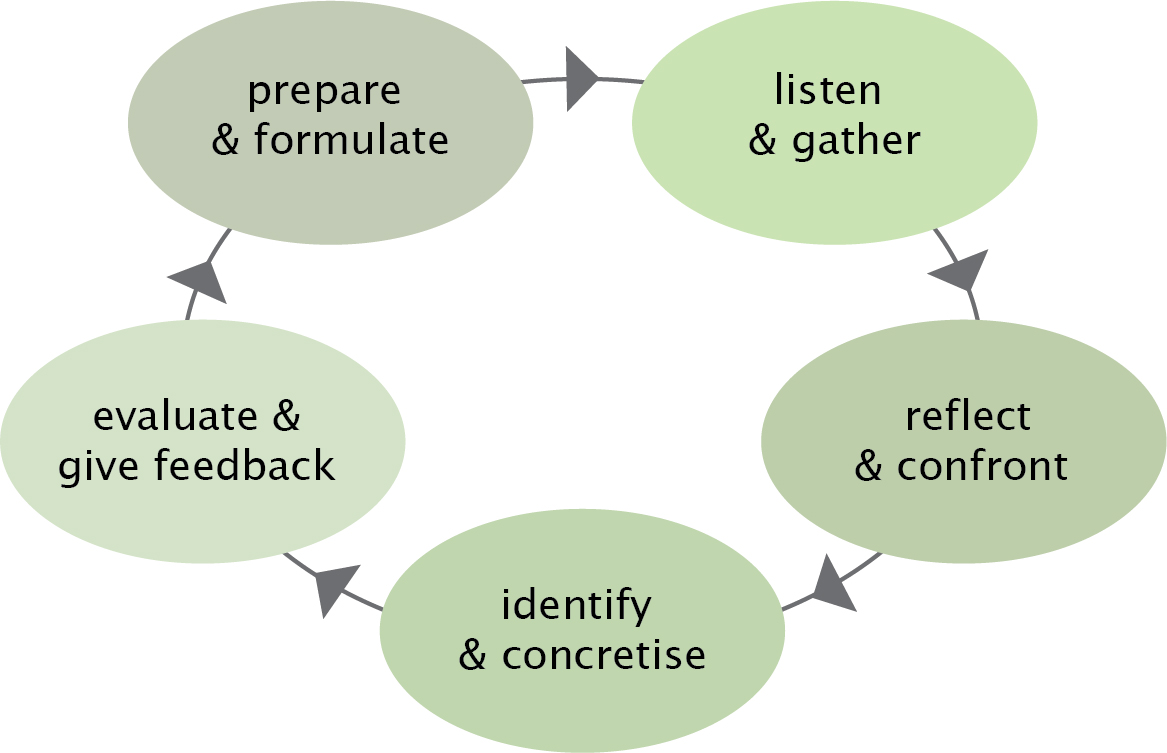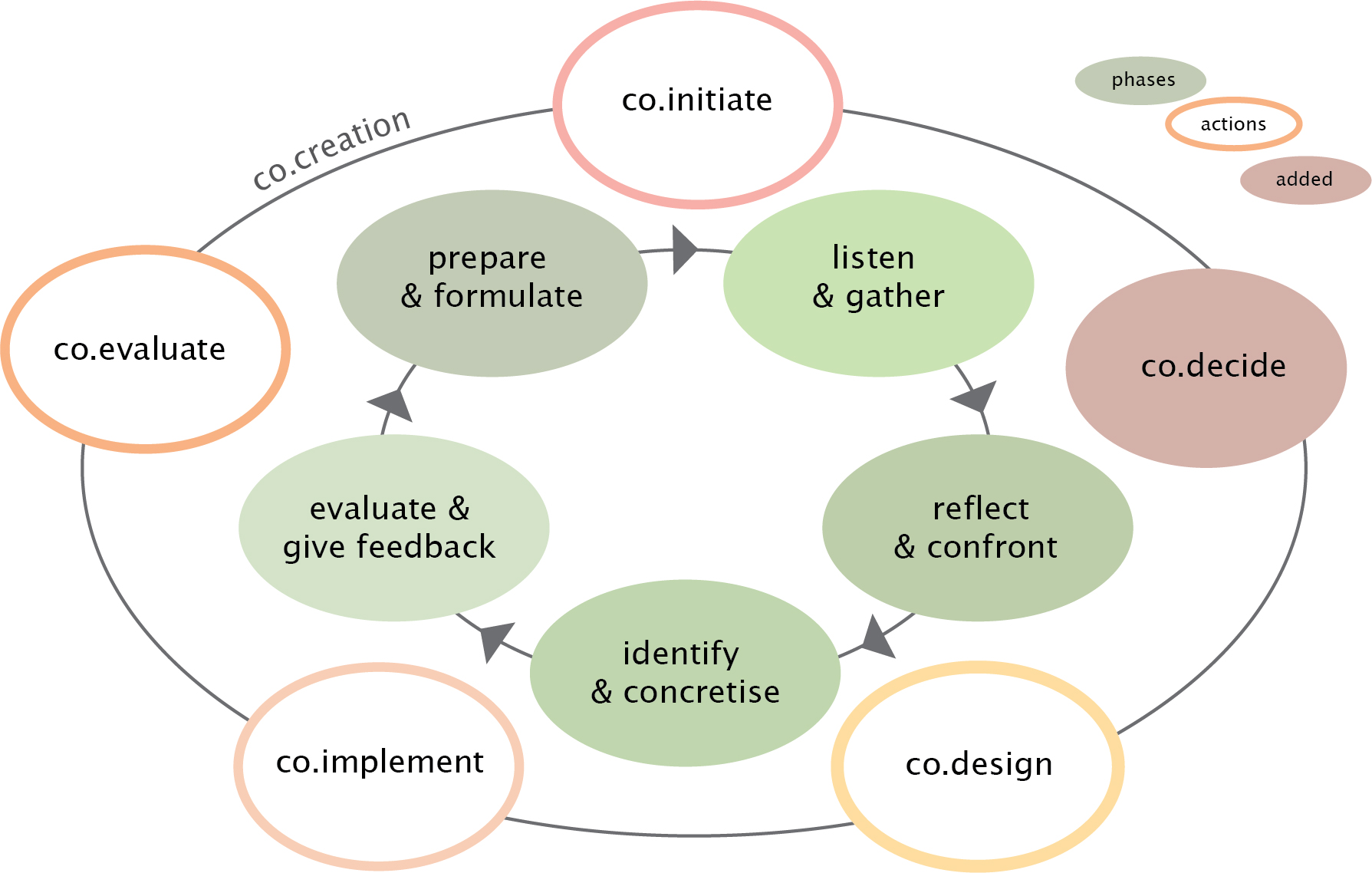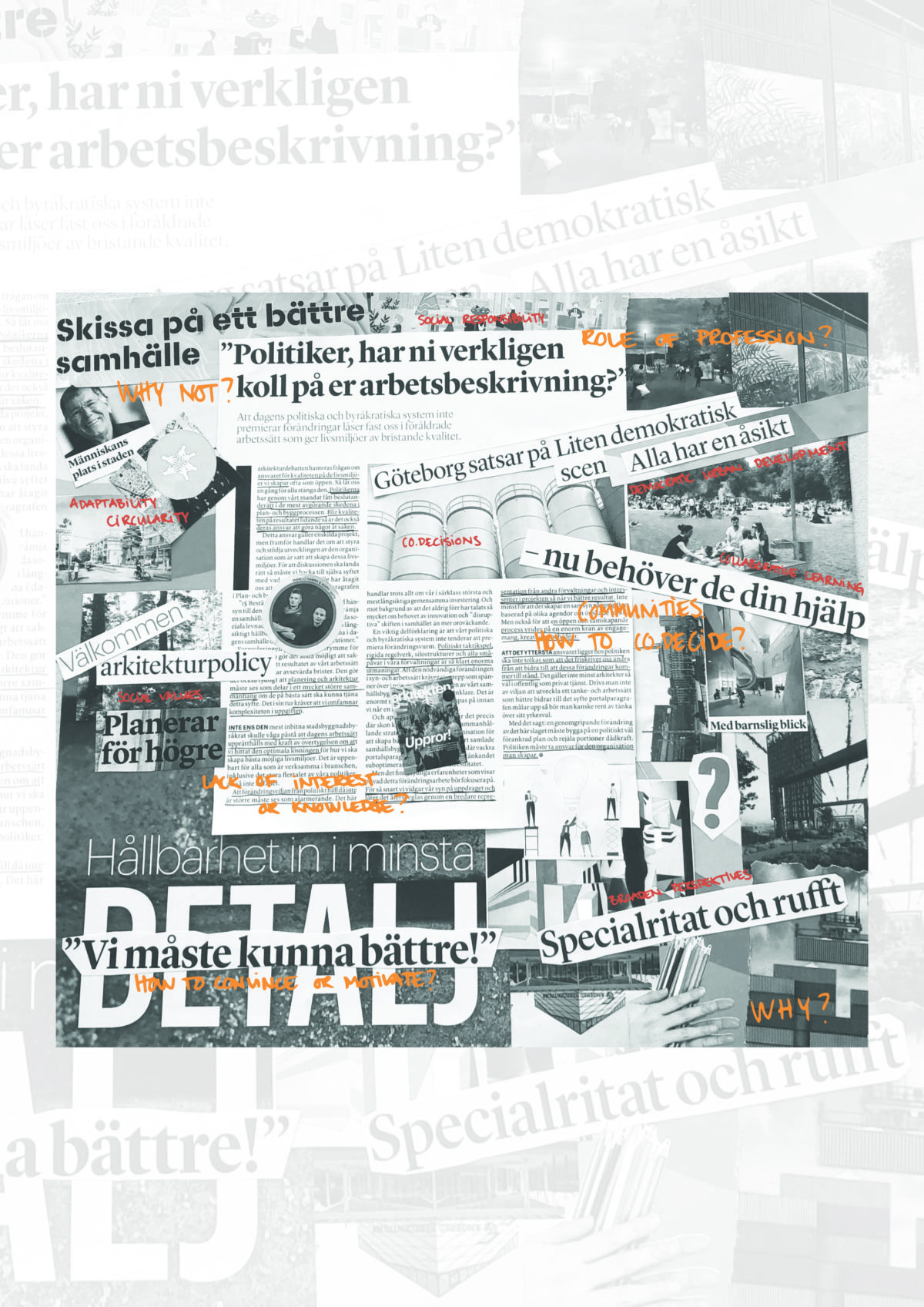co.creation
Co.creation is a design concept where the end users are involved in the process to collaboratively define and tackle challenges together with the initiator. The concept is spread globally and is used in various disciplines, depending on context. Co.creation starts from the idea that everyone is an expert on one issue or another – everyone has something to contribute with – and the different levels of expertise people possess are equally valuable in co.creation. It means that anyone can influence the outcome but also the process.
Co.creation is based on user participation – to find common solutions to common problems. In urban development and planning it is about inviting the citizens to the decision-making process, and thereby balancing the power relations between the top-down and bottom-up perspectives. This strengthen and build trust to the democracy, but also establishes a common understanding from different perspectives and thereby creates a more relevant and directed development. It is a matter of combining factual and theoretical knowledge which the civil servants possess with what is called “experience-based knowledge”. This means a change of new demands for both the city and the citizen roles as well as the principles of representative democracy. Political goodwill and a strong local organisation with good presentation are crucial conditions for participation to be able to work in practice. All interested parties should have equal access to information, and thereby equal preconditions for decision-making. The capacity for sustained dialogue applies not only to civil servants but also to citizens, who need to expect to invest a lot of time and energy. Early awareness of one another’s conditions is therefore important to avoid disappointment and frustration. By confronting discrimination, exclusion and dissatisfaction, it is made clear what is possible and what is insufficient in the co.creation process, and this appears to be central to empowerment of citizens.

The co.creation process consist of phases and actions – here explained by Adler (2015) & Abrahmansson (2018) – and this is used as theoretical base for the thesis.

Political decisions are crucial for co.creation. Furthermore, it is important that there is a budget directed to citizen participation and co.creation. Clear communication regarding political missions and budgets, and possibilities of citizen influence is essential. Important is to clarify at what political level and by whom decisions could be made, what kind of agreements there are and how they practically should be implemented and followed up. From this grows the insight on how decision-making processes take place and hopefully also a greater understanding of democratic urban development.
citizen participation and influence
The level can be described through a five-step graphical model of a staircase. This has been developed by Sweden’s municipalities and regions (SKR) to help municipalities to design their methods and strategies for citizen participation in urban planning. It is inspired by Sherry Arnstein’s “Ladder of citizen participation” from 1969, with eight steps, corresponding to the extent of citizen’s power in determining the end product. Arnstein’s ideological attempt is to reach the top of the ladder and are used as an analysis tool, while SKRs model on the other hand describes the five steps more as equivalent strategies to choose from. The general concentration by municipalities in Sweden are put on dialogue and to develop different forms of it is.

An adopted version of SKR’s staircase – this model – has been used as an analysis tool in this thesis.
Inspired by the theoretical framework, a model of co.creation has been developed for the thesis. The model is based on Adler’s and Abrahamson’s theories of phases and actions of co.creation, connecting them into one merged circular model. The actions have been transformed into a cycle instead of a chain of actions, emphasising that there is no clear start or end of the co.creation process. It can start by any action, have an organic progress and go back and forth between phases. The circular form is also presenting the process as a working model for continuous cycles.

Even though common decision-making should be a matter of course throughout the whole process, an action of “co.decide” has been added to the model. This addition is made to highlight the importance of that action, connected to the critical phase of confrontation when trust between the actors are being built.
you can read more about the theoretical framework in chapter two in the booklet
1. introduction
2. theoretical framework
3. case study: Gothenburg City
4. co.creation process model
5. reflections & discussion
